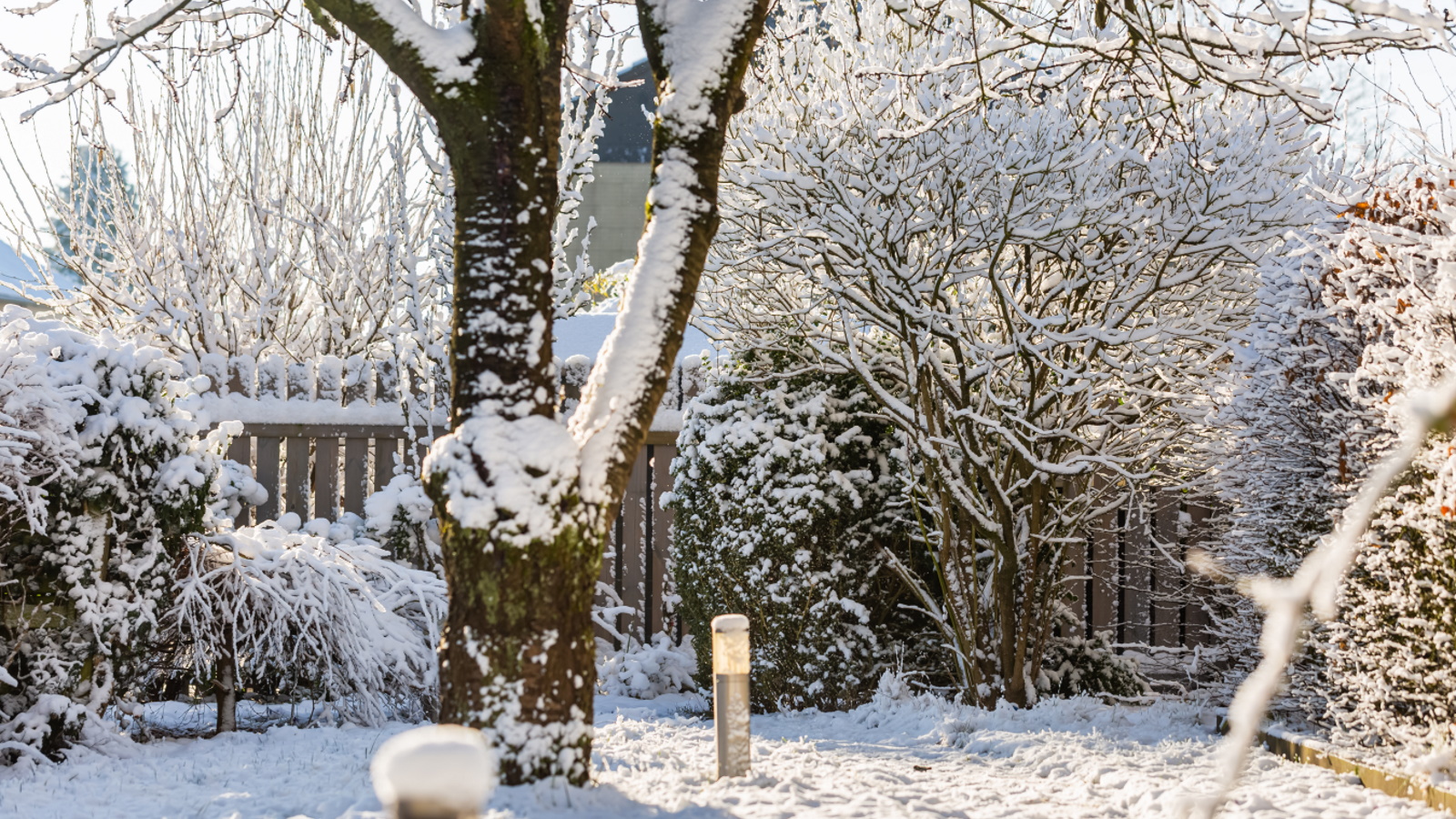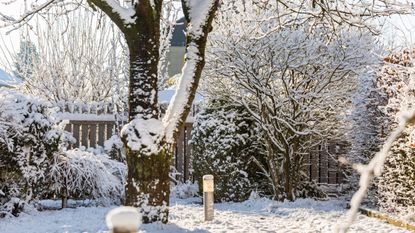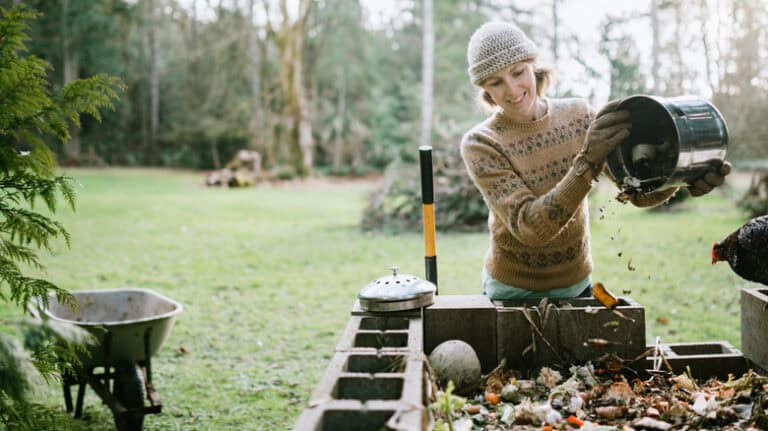How To Repair Your Yard After Vicious Winter Storms: Expert Tips
To repair your yard after winter storms, clear debris and assess damage. Then, reseed or resod affected areas.
Winter storms can wreak havoc on your yard, leaving it in dire need of repair. Snow, ice, and high winds can cause significant damage to trees, shrubs, and lawns. Clearing debris is the first step to restoring your yard’s health.
Assess the extent of the damage to determine the best course of action. Damaged grass may need reseeding or resodding, while trees and shrubs might require pruning. Fertilizing the soil can also help to rejuvenate your plants. Regular maintenance and care will ensure your yard recovers and thrives again, ready for the upcoming seasons.

Credit: www.nytimes.com
Assessing Winter Damage
Winter storms can wreak havoc on your yard. Before starting repairs, assess the damage. This will help you understand the scope of work needed. Begin by identifying common issues and gathering the necessary tools.
Identifying Common Issues
Winter storms can cause various problems. Look for broken branches and damaged plants. Check for exposed roots and soil erosion. Inspect fences and garden structures for damage.
- Broken branches: Storms can snap tree branches.
- Damaged plants: Frost can harm delicate plants.
- Exposed roots: Heavy winds may reveal roots.
- Soil erosion: Rain can wash away soil.
- Damaged structures: Check fences for storm damage.
Tools Needed For Inspection
Gather the right tools before inspecting your yard. This ensures a thorough check. You will need the following items:
| Tool | Purpose |
|---|---|
| Pruning shears | Trim broken branches. |
| Garden gloves | Protect your hands. |
| Rake | Collect fallen debris. |
| Shovel | Address soil erosion. |
| Wheelbarrow | Transport heavy materials. |
| Measuring tape | Measure damaged areas. |
With these tools, you can inspect your yard effectively. Make a list of the damage you find. This will help you prioritize repairs.

Credit: www.nytimes.com
Clearing Debris
Winter storms can leave your yard in disarray. Clearing debris is the first step to a beautiful yard. This process involves removing fallen branches and disposing of dead plants. Let’s explore these steps in detail.
Removing Fallen Branches
After a storm, fallen branches litter your yard. These can harm your grass and plants. Start by gathering all branches into a pile. Use a pair of sturdy gloves to protect your hands.
- Small branches can go into a compost bin.
- Large branches might need cutting into smaller pieces.
- Use a pruning saw for thick branches.
Rent a wood chipper to convert large branches into mulch. Mulch is great for your garden beds.
Disposing Of Dead Plants
Dead plants can attract pests. Remove them quickly to keep your yard healthy. Check each plant for signs of life. If a plant is dead, pull it out by the roots.
- Use a hand trowel to dig around the roots.
- Place the dead plants in a yard waste bag.
- Compost the dead plants if they are disease-free.
If plants have diseases, dispose of them in the trash. This stops the spread of disease in your garden.
Here’s a simple table to help with the process:
| Task | Tool Needed |
|---|---|
| Gathering branches | Gloves |
| Cutting large branches | Pruning saw |
| Removing dead plants | Hand trowel |
Clearing debris is an important step in yard recovery. Follow these tips to restore your yard’s beauty.
Soil Restoration
After a fierce winter storm, your yard’s soil can suffer. The freezing temperatures and heavy snow can compact and deplete the soil. Soil restoration is essential to bring back its health. This involves testing the soil and amending it with nutrients.
Testing Soil Health
Testing the soil is the first step. Use a soil test kit to check for nutrient levels. This will tell you what your soil needs. Look for pH levels, nitrogen, phosphorus, and potassium.
You can get a test kit from garden centers. Follow the instructions carefully. Collect soil samples from different parts of your yard. This ensures you get a good overall picture.
Amending With Nutrients
Once you know what your soil lacks, amend it with the right nutrients.
- Nitrogen: Promotes leafy growth. Use compost or a nitrogen-rich fertilizer.
- Phosphorus: Helps with root development. Bone meal is a good source.
- Potassium: Strengthens plants. Use wood ash or a potassium-rich fertilizer.
Organic matter is also important. Add compost or well-rotted manure to improve soil structure. Spread a layer over the soil and till it in.
Water the amended soil well. This helps the nutrients seep in. Your soil is now ready for planting.
Lawn Repair
Winter storms can damage your yard. It’s important to repair your lawn. This guide will help you bring your lawn back to life.
Reseeding Bare Patches
Winter storms can leave bare patches on your lawn. Reseeding can help fix this issue. Follow these steps to reseed bare patches:
- Remove any debris from the bare patches.
- Loosen the soil with a rake or hoe.
- Spread grass seeds evenly over the area.
- Cover the seeds with a thin layer of soil.
- Water the area gently but thoroughly.
Make sure to keep the soil moist until the seeds germinate. This will help new grass grow well.
Aerating Compacted Areas
Winter storms can cause soil compaction. This makes it hard for grass to grow. Aerating your lawn can solve this problem. Here’s how you can aerate your lawn:
- Water your lawn one day before aerating.
- Use a lawn aerator to poke holes in the soil.
- Focus on areas that look compacted or worn down.
- Remove the soil plugs left by the aerator.
- Water your lawn again after aerating.
Aerating helps air, water, and nutrients reach the grass roots. This promotes healthier and stronger grass.
Tree And Shrub Care
Winter storms can cause serious damage to trees and shrubs. After a harsh winter, your yard might need some attention. Let’s explore how to revive your trees and shrubs effectively.
Pruning Damaged Branches
First, inspect your trees and shrubs for broken branches. Pruning damaged branches helps the plant heal and grow stronger. Use clean, sharp tools to make clean cuts.
- Identify branches with cracks or breaks.
- Cut branches at a 45-degree angle.
- Remove branches close to the trunk.
Be careful not to cut too much. Removing too many branches can stress the plant. Focus on removing only the damaged parts.
Supporting Weak Trees
Some trees might look weak after winter storms. Supporting weak trees can help them stand tall again. You can use stakes and ties for support.
| Step | Action |
|---|---|
| 1 | Place stakes around the tree. |
| 2 | Use flexible ties to secure the tree. |
| 3 | Check ties regularly to avoid damage. |
Stakes should be removed after the tree gains strength. This usually takes one growing season.
Flowerbed Revival
Winter storms can wreak havoc on your flowerbeds. The cold, snow, and ice damage plants and soil. Reviving your flowerbed after such storms is crucial. This section will guide you through the steps for a vibrant flowerbed.
Replacing Damaged Plants
First, inspect your flowerbed for damaged plants. Remove any dead or weak plants. You can use a small shovel for this task.
- Check the roots and stems carefully.
- Dispose of diseased plants properly.
Next, choose new plants that suit your climate. Opt for hardy plants that can withstand harsh weather. Plant the new additions with enough space for growth.
Water the new plants generously. Consider adding plant food to boost growth.
Replenishing Mulch
Mulch helps retain moisture and protect roots. Winter storms often displace or erode mulch.
- Clear old mulch and debris from the flowerbed.
- Choose organic mulch like wood chips or straw.
- Apply a thick layer, about 2-3 inches deep.
Ensure the mulch covers the entire bed evenly. Mulch also prevents weed growth.
Regularly check and replenish mulch as needed. Healthy mulch means a healthy flowerbed.
Pest And Disease Control
Winter storms can leave your yard vulnerable to pests and diseases. These invaders can damage plants and ruin your hard work. Taking steps to control them is crucial for a healthy yard.
Identifying Common Pests
Before you treat your yard, identify the pests. Some common pests include:
- Aphids: Small, green insects that cluster on leaves.
- Japanese Beetles: Metallic green bugs that chew on plants.
- Grubs: White larvae found in the soil, eating roots.
Use a magnifying glass to examine leaves and soil. Look for damage like holes, yellowing, or wilting. This helps you find the culprits quickly.
Applying Treatments
Once you identify the pests, apply suitable treatments. Here are some methods:
- Natural Predators: Introduce ladybugs to eat aphids.
- Neem Oil: Spray on plants to deter beetles and grubs.
- Insecticidal Soap: Use on leaves to kill soft-bodied pests.
Read the labels carefully before using any product. Follow the instructions to avoid harming your plants.
Regularly check your yard for signs of pests. Early detection and treatment keep your yard healthy.
Watering Strategies
Winter storms can leave your yard looking devastated. One way to restore it is by using effective watering strategies. Proper watering will help your plants recover and thrive again.
Setting Up Irrigation
Setting up an irrigation system is crucial for a healthy yard. It ensures that water is evenly distributed across your lawn.
- Choose the right system: Drip, sprinkler, or soaker hoses.
- Check water pressure: Ensure it is adequate for your chosen system.
- Install timers: Timers help you water your lawn at optimal times.
- Inspect for leaks: Leaks can waste water and reduce effectiveness.
A well-planned irrigation system saves time and water. It also ensures your yard gets the right amount of moisture.
Watering Newly Planted Areas
Newly planted areas need special attention. They are more vulnerable and need consistent watering.
- Water deeply: Ensure water reaches the root zone.
- Frequent checks: Check soil moisture regularly.
- Use mulch: Mulch helps retain soil moisture.
- Avoid overwatering: Overwatering can damage new plants.
Follow these steps to help new plants establish strong roots. Consistent care will make them resilient and healthy.
Preventive Measures
Vicious winter storms can leave your yard in disarray. Taking preventive measures ensures your yard withstands future storms. This guide will help you prepare and protect your yard effectively.
Preparing For Future Storms
Start by clearing debris from your yard. Remove fallen branches, leaves, and other potential hazards. This keeps your yard safe and reduces storm damage.
- Prune trees and shrubs to prevent breakage.
- Secure loose items like garden furniture.
- Store tools and equipment safely.
Check your drainage system. Clean gutters and downspouts to prevent water logging. Ensure water flows away from your yard.
Strengthening Vulnerable Areas
Identify weak spots in your yard. Pay attention to areas prone to flooding or erosion.
| Vulnerable Area | Strengthening Tips |
|---|---|
| Low-Lying Zones | Install french drains or use gravel. |
| Exposed Soil | Plant ground cover or use mulch. |
| Weak Trees | Use tree stakes or cabling. |
Use windbreaks to protect delicate plants. This could be a fence or a row of shrubs.
Make sure to inspect your yard regularly. Fix small issues before they become big problems.

Credit: www.inkl.com
Frequently Asked Questions
How Can I Revive My Damaged Lawn?
Rake debris, reseed bare spots, and water regularly to promote new growth and restore your lawn’s health.
What Tools Are Needed For Yard Repair?
Essential tools include a rake, shovel, lawn spreader, and garden hose to efficiently repair and maintain your yard.
How Do I Prevent Future Yard Damage?
Regularly prune trees, improve drainage, and use protective coverings to shield your yard from harsh winter conditions.
Conclusion
Reviving your yard after a winter storm is achievable with some care and effort. By following these tips, your yard can flourish again. Regular maintenance and timely repairs will ensure a healthy and beautiful landscape. Embrace the challenge and watch your yard transform into a vibrant outdoor space.







